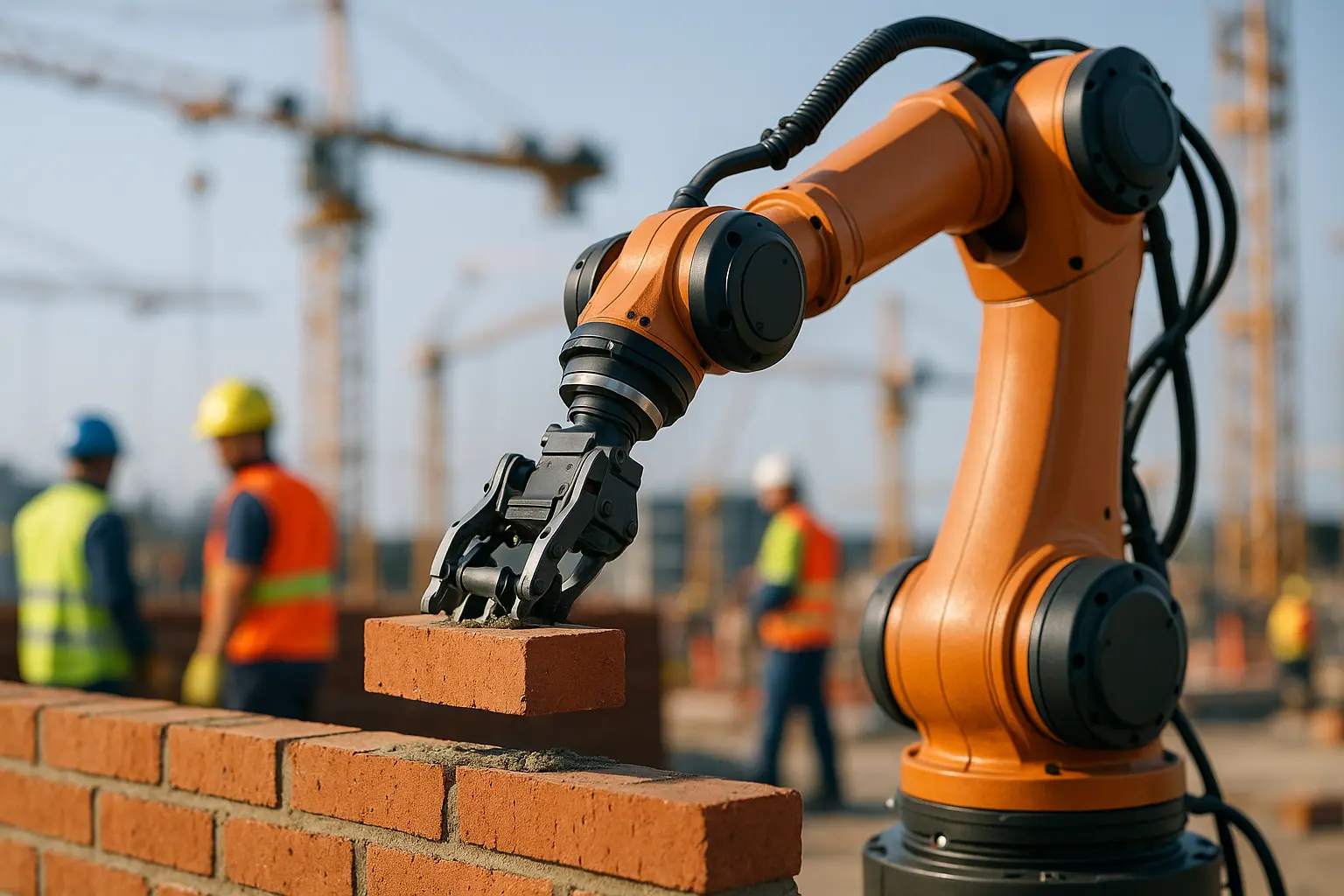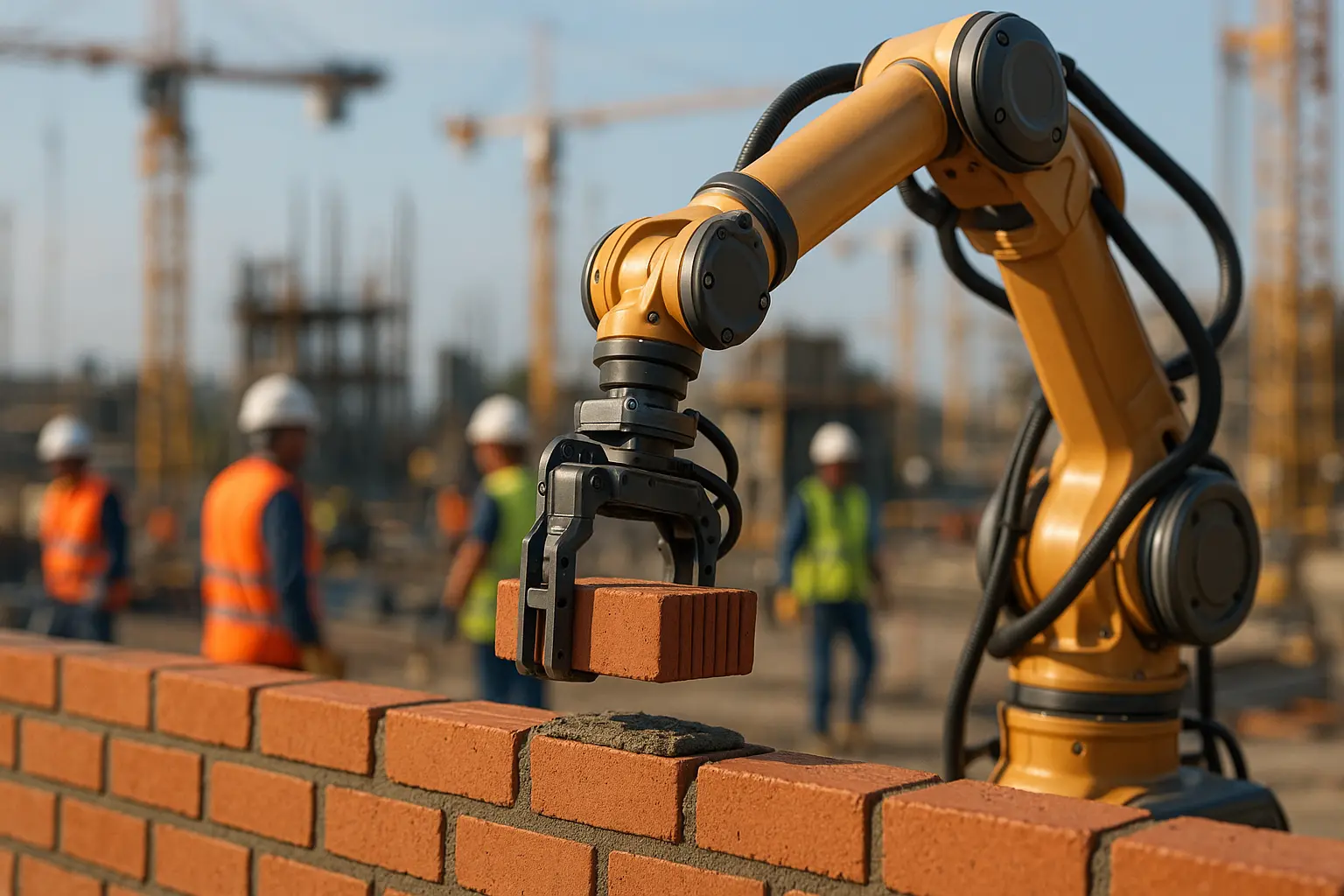Imagine a world where construction sites are bustling hubs of efficiency, precision, and safety, all thanks to the integration of smart technologies. In recent years, the construction industry has undergone a transformative revolution, embracing the power of the Internet of Things (IoT) and other innovative technologies to reshape how we build. As we stand on the cusp of this new era, it’s time to explore the intelligent tools that are revolutionizing the way we approach construction projects. Today, we invite you to dive into the convergence of technology and building, and uncover how these advanced systems are reshaping the roles of workers and redefining project outcomes.
The Rise of IoT in Construction: A New Era of Connectivity and Control
As we explore the advent of smart construction tools, it’s impossible not to highlight the central role of the IoT in this technological evolution. With an interconnected network of devices and sensors, the IoT is transforming construction sites into a web of real-time data streams. This newfound connectivity allows us to monitor equipment, track project progress, and ensure worker safety like never before.
Unpacking IoT’s Role
In this connected ecosystem, every tool and piece of equipment becomes a data point, transmitting valuable insights into construction management systems. Imagine being able to track the precise location of a crane or receive alerts when a bulldozer requires maintenance. Such insights not only enhance efficiency but also help prevent costly project delays.
Enhancing Safety and Efficiency
With IoT-enabled devices, we’re able to establish a safer working environment by monitoring worker movements and providing timely alerts in case of potential hazards. The ability to analyze data on the fly allows us to implement solutions that reduce risks and improve safety standards. This tech-driven approach creates a construction landscape where errors are minimized, and productivity is maximized.
The integration of IoT in the construction industry is more than just a technological upgrade—it’s a paradigm shift that is enhancing the roles of workers and empowering us to reimagine the future of building.
Smart Tools Transforming Construction: Efficiency at Your Fingertips
Gone are the days when construction relied solely on traditional tools and manual labor. With the advent of smart technologies, we’re witnessing a transformation that puts efficiency and precision at the forefront of every project.
The Power of Automation
Smart tools equipped with automation capabilities are revolutionizing how we handle construction tasks. Whether it’s a 3D printer creating intricate architectural designs or a robotic mason laying bricks with unmatched accuracy, these technologies are setting new standards for project execution. By reducing human error and minimizing the need for labor-intensive processes, smart tools are delivering projects that are not only faster but also cost-effective.
Data-Driven Decision Making
In this modern era, data has become the backbone of construction management. Smart tools collect and analyze vast amounts of information, empowering us to make informed decisions in real-time. From optimizing resource allocation to predicting project timelines, data is our compass, guiding us toward optimal outcomes. This data-driven approach allows us to unlock new levels of efficiency and ensure resources are utilized judiciously.
Embracing smart tools in construction is not just a technological trend; it’s a strategic move that aligns with our quest for innovation and progress. As we continue to harness the power of these tools, we’re paving the way for a future where construction is synonymous with excellence and modernity.

Innovative Safety Solutions: Prioritizing Worker Well-being
In the high-stakes world of construction, worker safety is paramount. Thanks to the integration of smart technologies, we’re now able to prioritize worker well-being like never before. Let’s explore the innovative solutions that are reshaping safety protocols on construction sites.
Wearable Tech for Real-time Monitoring
Wearable devices, such as smart helmets and vests, are becoming indispensable tools for ensuring safety on construction sites. These devices utilize sensors to monitor vital signs, detect fatigue, and track movements. With real-time data at our fingertips, we can proactively address potential health risks and ensure that every worker returns home safely at the end of the day.
Predictive Analytics and Hazard Detection
Through the use of predictive analytics, we can anticipate and mitigate risks before they escalate into incidents. By analyzing data patterns, we’re able to identify potential hazards and implement preventive measures. This foresight is crucial in maintaining a safe work environment and reducing the likelihood of accidents.
In an industry where risks are inherent, smart technologies offer a lifeline to worker safety. By utilizing these innovative tools, we’re adopting a proactive stance that prioritizes the health and well-being of every individual on the construction site.
As we stand on the brink of a new era in construction, the integration of smart tools signals a profound transformation in how we build and manage projects. From IoT connectivity to smart devices that enhance safety, the tools we’re adopting today are laying the groundwork for a future where construction is defined by precision, efficiency, and innovation.
Our journey into the world of smart construction tools has highlighted the potential for growth, safety, and progress. By embracing these technologies, we’re not only transforming how we operate but also reshaping the very skyline of our cities. As we continue to innovate, let’s remain committed to utilizing these advancements in ways that benefit both people and the planet.
The future is bright, and it’s built on the foundation of smart construction tools that ensure every project is a testament to human ingenuity and technological prowess.
https://www.youtube.com/watch?v=F-WAckYp99o
FAQ
What are smart construction tools?
Smart construction tools refer to advanced equipment and devices integrated with digital technology, aimed at improving efficiency, safety, and productivity on construction sites. They often utilize sensors, data analytics, and connectivity to enhance traditional construction practices.
How do smart construction tools improve safety on construction sites?
These tools enhance safety by providing real-time data on environmental conditions, equipment performance, and worker health. For instance, wearables can monitor vital signs and alert supervisors to potential hazards, while smart helmets might track fatigue levels among workers.
Can smart construction tools help reduce construction costs?
Yes, by optimizing resource use, minimizing errors, and decreasing downtime, smart tools can significantly cut costs. They allow for precise planning and execution, reducing material waste and labor expenses while ensuring projects stay on schedule.
What types of data do smart construction tools collect?
They typically gather data on equipment status, environmental conditions, worker productivity, and site progress. This information is then analyzed to provide insights that can be used to refine processes, enhance safety protocols, and optimize resource allocation.
Are smart construction tools difficult to implement for traditional construction companies?
While there might be a learning curve, most smart tools are designed with user-friendliness in mind. Training is often available, and the long-term benefits of improved efficiency and reduced costs usually outweigh the initial investment and adaptation period.



